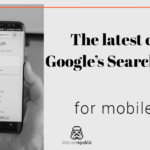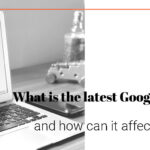
Analysis of health sector websites: Do’s an dont’s for better positioning
In our last webinar, our specialists Montserrat López and Laura Sánchez talked to us about the importance of health content in SEO strategy, particularly in the present situation, where there is a huge amount of information related to this subject because of the coronavirus pandemic.
They talked about Google’s progress on providing accurate health information, updates, especially the Medic Update, and emphasised a series of do’s and don’ts that you should consider when optimising content and generating health strategies on your sites, such as having specialised writers and reliable sources, or generating content that covers all aspects of a specific disease or problem.
You can check out the live analysis on our YouTube channel.
Why is quality health content important?
Nowadays, quality content with accurate information is particularly important, especially in the health sector, given the constant need of users who generate thousands of queries in search engines related to diseases, symptoms, new conditions, etc. Google seeks to respond to these needs, but the SERP results did not always have completely reliable sources and often the rankings showed results from non-specialised or poor-quality media.
Hence the Search Quality Evaluator Guidelines (SQEG), which set quality rating standards for pages with particularly sensitive content or content that may affect the user’s life (YMYL pages). They do not directly affect the rankings, but their guidelines are used to improve Google’s search algorithm.
These quality rating standards focus on 3 points about how Google looks at websites and how they separate high-quality content from low-quality content:
- Beneficial Purpose
- E-A-T: Expertise, Authoritativeness, Trustworthiness
- YMYL (Your Money or Your Life)
Beneficial purpose
This point could be summarised as: “Websites and pages should be created to help users”, as Google states. According to this guideline, each page should fulfil its purpose by focusing on the user, benefiting them in some way and fulfilling their information needs; so, a page created with purely commercial intent and “without any attempt to help users” is the lowest quality page. This is especially important in the health sector, where content is closely examined by Google to determine whether it meets this “beneficial purpose” requirement.
E-A-T
E-A-T is short for Experience, Authority, Trustworthiness. This is how Google describes the 3 basic pillars of a website evaluation, as performed by its quality testers. The quality testers manually evaluate the quality of the search results and carefully study the content of the top pages in the SERP.
- Experience: refers to the author(s) of the content on the page. Is the author an expert in the subject? For health sites, is the content signed by an expert in the subject matter or an industry professional? Does he/she have the credentials, if necessary, to back that up, and is this information available on the website? These are all questions to consider in determining the level of “Expertise” of the content evaluated.
- Authority: refers not only to the content itself and the website on which it appears but also to the author of the content. Google is placing a completely new emphasis on the author of the main content on the page, whereas before the emphasis was entirely on the reputation of the website.
- Trustworthiness: is also related to the previous two points, since being an expert, on an authority site and with a trusted source means that people can trust your content.
EAT is particularly relevant for the assessment of content covering sensitive YMYL (Your Money, Your Life) issues, as will be discussed below.
Non-YMYL content does not require the same rigour in applying the EAT criterion.
YMYL
What are the topics classified as YMYL?
- Pages requiring personal information that could be used for identity theft or impersonation.
- Sites used for financial transactions, where personal bank accounts information is required.
- Pages that offer medical or health information that could be potentially harmful to the user.
- Pages that give advice on life and its important decisions, on how to take care of children, how to buy a house or a car…
- Pages that advise on decisions that may affect personal finances or happiness, such as financial advice, legal advice…
These page quality guidelines affect this type of content, given that they are results that can potentially affect the health, safety, or stability of the individual.
Impact of algorithm changes on health-related websites
Several times a year, Google makes significant changes to its algorithms and search systems. All these changes and updates by Google were focused on improving the results in the SERP, to present relevant and reliable content to the user.
- Medic Update
- Medic Update #2
- March 2019 Core Update
- June 2019 Core Update
EAT concept is introduced in 2018, Google’s updates focused on integrating aspects of EAT into the search algorithm. This change indicated that health-related content must be written by medical experts to be considered trustworthy and reliable enough to meet user expectations. Not long after, in 2019, changes to Google’s algorithm related to EAT occurred again, causing a major shake-up in the healthcare sector, and generating a lot of buzz among SEO specialists.
The Google Core update in June 2019 also emphasised the well-known “beneficial purpose”, as well as starting to distinguish certain sensitive topics such as diets, nutrition, specific pathologies, and others.
From then until now, Google continues to adjust its quality criteria around beneficial purpose, EAT and YMYL, making revisions and constantly adjusting rankings, affecting health sites significantly.
For some websites, the era of emphasis on EAT in 2019 has been a real rollercoaster ride: constant drops and increases in visibility, abrupt changes in the SERPs completely unseating certain sites, drastic drops in rankings only to rise again in the next update…All these things suggest that Google does not (yet) have a standard and consistent way of calculating EAT when evaluating sensitive YMYL topics such as health and is still working on it, which forces us to be permanently attentive to the quality of our content if we are talking about health-related topics.
Do’s and dont’s
Considering the impact of Google’s algorithm, especially on YMYL (Your Money or Your Life) content such as health, there are several issues to consider when optimising health sites:
- Generate extensive content talking about everything related to the disease: symptoms, causes, treatment, etc.: Some time ago, in SEO strategies, if we saw a conglomerate of keywords with significant search volumes, such as “diabetes symptoms” or “diabetes treatment”, we would normally generate content for each term. But in the case of health, all these searches are closely related and correspond to different phases of the same conversion funnel, so Google rewards the integration of all terms related to the disease in the same content that acts as a complete guide for the user. As you can imagine, in content with these characteristics, “Thin Content” is something that should not appear.
- Use verified sources: medical editing, use of reliable sources that are respected by search engines: providing truthful information should be the first basic criteria to follow, although this situation can be very unequal between domains that have good authority, and others that are not even well known by Google. In both cases, it is essential to have writers with an exceptionally good knowledge of health, but especially the domain with less authority can increase its visibility by making contents that are written by doctors and come from corroborated health sources.
- Always focus on the content to benefit the user: Google always seeks to show useful information that has a positive impact on the user, so if we share this thought of empathy towards the end-user, we will make content more useful and more likely to rank in the top positions.
Conclusions
Create high-quality content especially in the health sector we must look at the three main points: beneficial purpose, EAT and YMYL.
- The content should always follow Google’s guidelines and be useful for the user, so you will ensure the success of your strategy. Each page needs the right experience behind it. Health or YMYL pages require higher levels of EAT so we must be especially careful with this criterion.
- Several more technical optimisations can help you as well, for example, Structured Data Markup: there are specific markups for health content, such as elements or listings. There are official health markups, but they are not confirmed by Google.
- Content update: the content should be a living thing, updated at the slightest change or new information you may see about the disease or the topic to be addressed.
Finally, it is important to keep in mind that Google’s standards are constantly changing. This is because users’ search expectations are also always changing, especially in the health sector, and Google needs to keep up to date to stay relevant, so we cannot stop working on the quality of our content.
Artículos relacionados
Internet República
Latest posts by Internet República (see all)
- New Instagram update: reel achievements - 19 October, 2023
- Elon Musk has bought Twitter. What does this mean? - 27 April, 2022
- NFTs ARE ARRIVING ON SOCIAL MEDIA - 21 February, 2022






